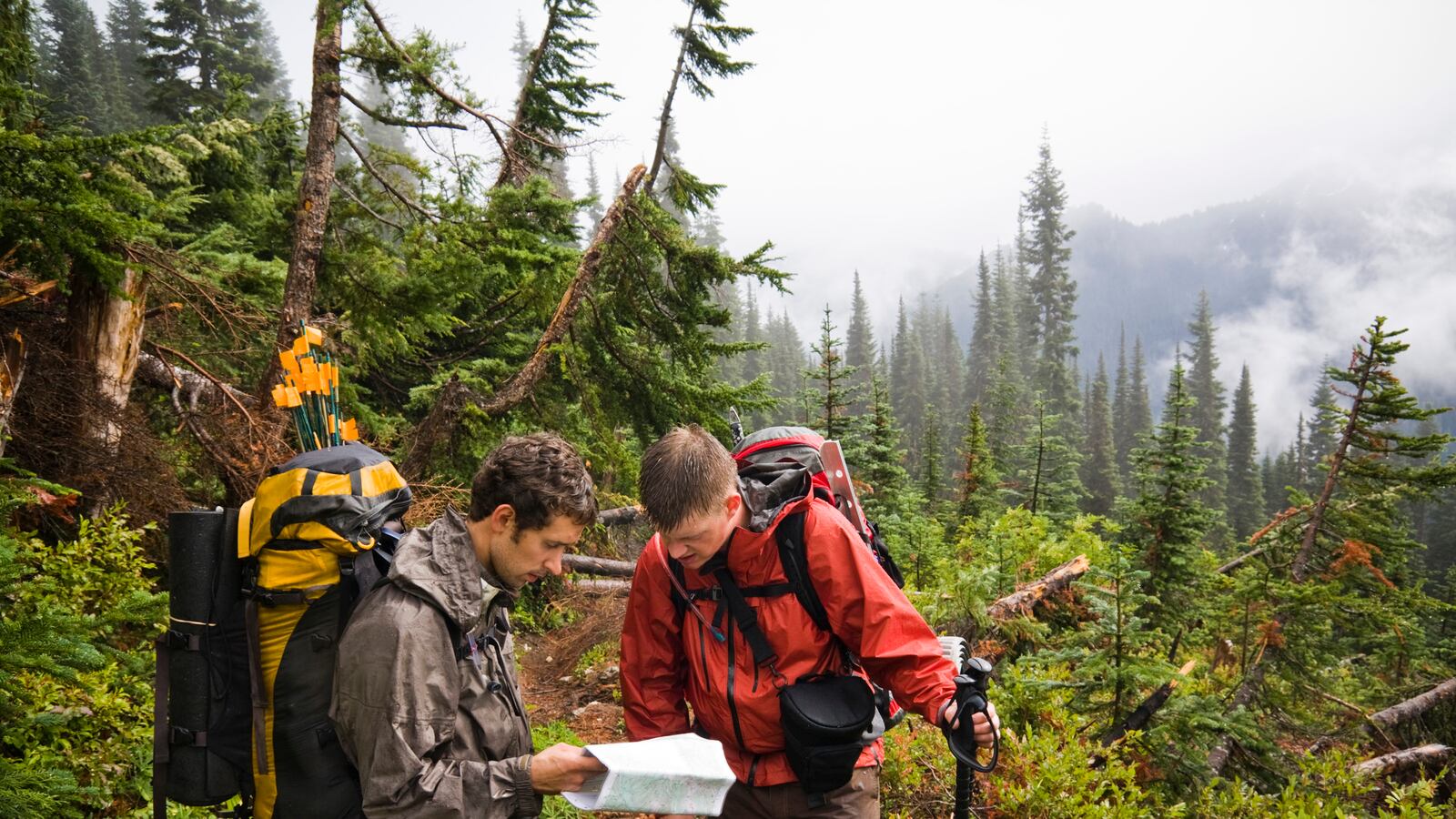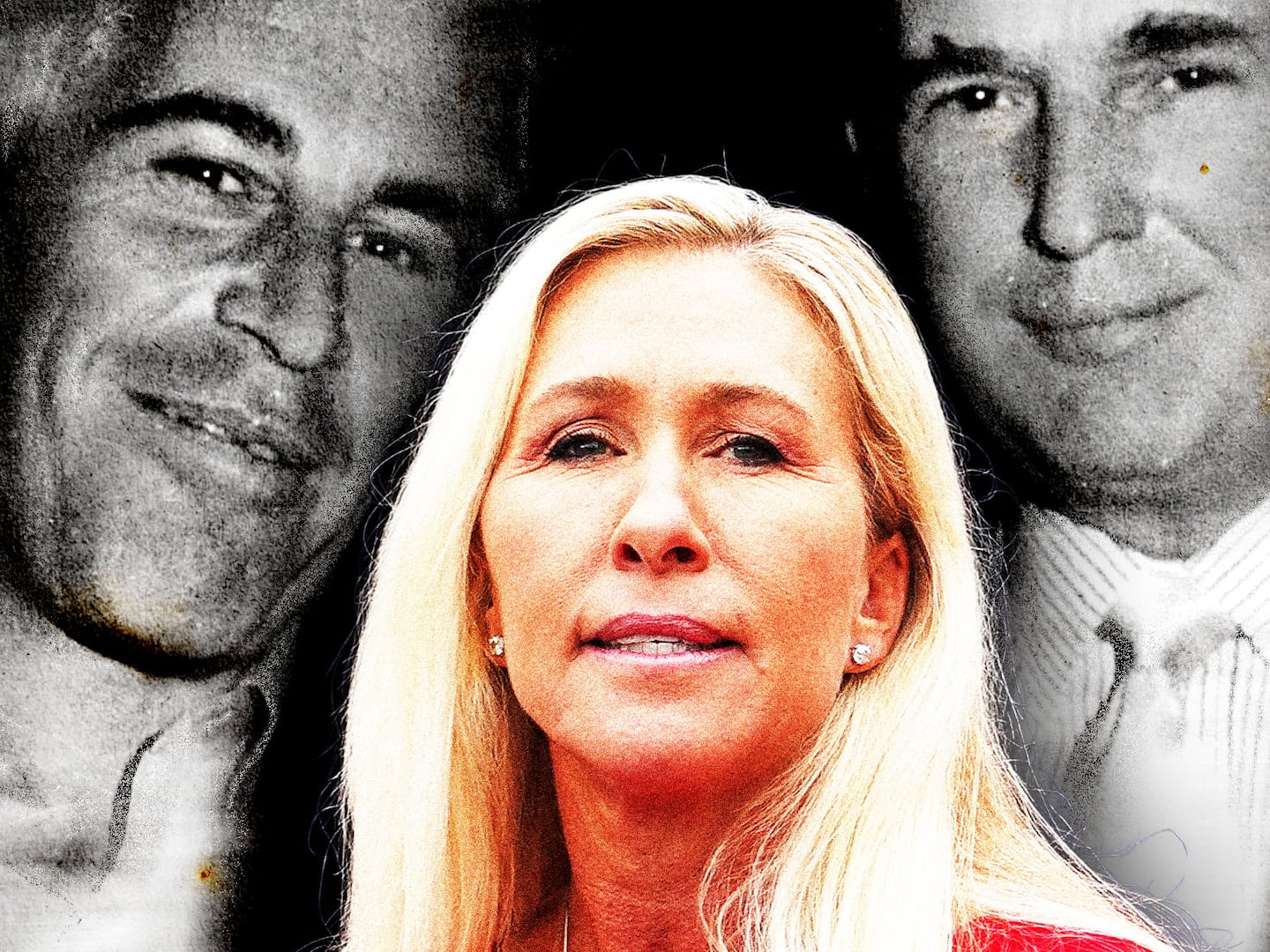This was the big moment for me, when I realized Forrest Fenn had the requisite crazy, that immortality was on his bucket list—maybe was his entire bucket list—and that he would stop at nothing to shove himself into history. I was standing in his home office on my first day in Santa Fe, New Mexico, working on a profile of him. The room was wall-to-wall artifacts. Moccasins and headdresses. Dolls and skulls. At least one buffalo head had an arrow tip still lodged in it. And amid the lost-world splendor of it all, sitting on Fenn’s desk was a quart-size bronze bell.

Fenn buries them, he told me, each one stuffed with his life story, stamped with his name, and—lest there be any confusion at all about their purpose—engraved with messages for posterity: “It doesn’t matter who you are, it only matters who they think you are”; “If you should ever think of me, a thousand years from now, please ring my bell so I will know”; “God will forgive me, that’s what he does.”
Faced with the prospect of becoming dirt himself, “the leftovers of history,” as he writes in The Thrill of the Chase, he decided he’d try to make sure that in the great Google search of eternity, he always has a place. One plan to do so was the bronze bells. The other, of course, was the treasure.
I believe you can find it, even if you skip almost the entire second half of The Thrill of the Chase. You can ignore every page about Fenn’s war years, his gallery years, and his budding family. Uncap your highlighter, however, when you see the word “Yellowstone” or “father,” or “cancer.” These words mark important passages, the best windows into Fenn’s mind as he composed the work—and picked his spot.
Yellowstone National Park is my odds-on favorite to hold the treasure, based on the documents Fenn has given me, materials not in The Thrill of the Chase. Fenn spent at least 20 summers there, and in The Thrill of the Chase he says, “I absolutely loved that place.” In the book, however, Fenn doesn’t say much about specific locations in the park where he spent his Huck Finn years, let alone reveal details that might correspond with the hints in his now-famous poem. He seems to have blurred the image just so.
But Fenn sent me some unpublished work that isn’t so carefully presented. “Ramblings and Rumblings: The Fenn Family History (unedited)” was begun in the summer of 1996, with pencil scribblings in a blue notebook, and expanded haphazardly for years. “It is just notes and thinkings,” Fenn writes by way of preface. He compiled it for his grand kids, because he wished his own dad had done the same for him.
Yellowstone is the star of this Fenn history, even more so than it is in The Thrill of the Chase. It’s just the kind of place a sentimental fellow might return to carve his place in history. It’s “where my heart is,” Fenn writes in “Ramblings and Rumblings.” His parents returned every summer of their lives, his mother dying in a trailer park near Cameron, Montana, just north of the park, where the west fork of the Madison River runs into the Lower Madison River.
Fenn’s father died in Texas (and more on this to come), but in the old man’s last summer alive, his son made sure he saw Yellowstone. Fenn drove his father, pulling an Airstream trailer 1,700 miles one way, to where the Fenn family fished and camped until every child was grown.
When Fenn was in grade-school, according to the manuscript he prepared for his kids, his family camped near the Fishing Bridge, which crosses the Yellowstone River as it exits Yellowstone Lake. This may shed light on one of the lines in Fenn’s poem, which reads: “Put in below the home of brown,” a line many people interpret to be brown bears, a.k.a. grizzlies. Notably, then, Fenn’s ramblings include this: “At night the bears were a problem … and while the black bears were not a health threat, the Grizzlies killed several people every summer.”
Later the family moved from the Fishing Bridge to a campsite in West Yellowstone, which has its own special resonance for treasure seekers. In “Ramblings and Rumblings,” Fenn describes “a secret location” where the family gear was stashed during the off-season. “We just drove the car out into the forest about half a mile, and unloaded everything,” Fenn writes—and it was always there when they returned.
No matter where they were, the Fenns were fishing, and their favorite locales—disclosed in the unpublished family history—have promise as well. The Madison River’s best spots to cast a line: “the Slow Bend (five miles up), the Nine Mile Hole (you guessed it, nine miles), and the Water Hole (about eleven miles).” The parentheses are all Fenn, as are the ALL CAPS, when he writes that these spots were “TOP SECRET,” especially Nine Mile Hole, because it could hold only one fisherman. Perhaps that’s a match to the opening line of Fenn’s treasure poem, “As I have gone alone in there.”

But as you frisk and refrisk the poem for its meaning, keep a few more clues in mind: some people have suggested the treasure is under water, plopped in a river where Fenn loved to fish or swim. They are wrong, I know, for in a moment of exuberance, Fenn said so. He told me the chest is “exposed” to rain and snow, and could be scorched in a forest fire. He told me the box, which is just 10 inches by 10 inches, is unlocked—suggesting it’s someplace where it is unlikely to be toppled or otherwise thrown open.
Most importantly, when you’re scouting locations, consider that Fenn originally needed a space big enough to fit his own body. That’s because he planned to entomb himself alongside the box, and he still might. How serious is the idea? An earlier draft of the poem ended, “Then take the chest and leave my bones.”
Fenn has rewritten the poem, but he may just end up entombed with his treasure yet. “If I am diagnosed with terminal anything,” Fenn told me, “I will not die in a hospital bed if I have a few breaths remaining. I don't want to give any more clues, but if I am not too feeble to return to the chest when my turn comes, I cannot think of any better place for my bones to rest for a few millennia.”
There’s always the chance I’m wrong about Yellowstone. If so, my second pick would be northern Arizona, another place that Fenn has explored intensively, beginning when he trained pilots at Luke Air Force Base in the early ’60s. “I started exploring ruins a lot and digging,” he writes in “Ramblings and Rumblings,” his unpublished family history. “It was a fun time.” He glosses over that period in The Thrill of the Chase, but his Arizona stories are well known to friends.
Douglas Preston, who has covered archeology for The New Yorker, remembers Fenn telling him daring stories of flying through canyons, looking for alcoves and rock shelters that can’t be seen from above or below. “He would find them just as they were left when the Indians walked out,” Preston told me. One time he found a pot broken beneath a wooden peg, where it had hung ready for use. Another time he found—and still has, Preston says—a pot that had been repaired with a little love and yucca fiber.
It’s Fenn’s Arizona stories, in fact, that got him—and keep him—in trouble with the federal government. At least twice in 2008, an informant posing as an artifact collector and outfitted with a wire and hidden camera, visited Fenn, who entertained the guest with tales of his exploits.
He loves ducking into caves in particular, which seem a space to match Fenn’s ambitions, having long been used by people for tombs, shrines, and long-term storage. Again and again in his recorded conversations with law enforcement, Fenn mentions “caves” and “cave material,” and ancient artifacts he found “out of a cave.” He went into so many caves, he told the informant, he caught an infection from the dusty air.
The only other place the treasure may logically be is in northern New Mexico, not far from where Fenn lives today. Rule out Colorado and Nevada, as well as Idaho and Utah, which each get a demerit because they’re known for bait fishing, not fly-fishing, and Fenn is loyal to the latter. Remember that “blaze” is in the treasure poem because Fenn hoped to throw people off at that juncture. “I was careful,” he told me. “A blaze can be on a tree, in a fire, on the face of a horse, and a host of others.”
But no matter what state you look in, think big and significant places. Fenn is sentimental, sure, but he’s also got the ego of the fighter jock he once was, a guy who believes traffic lights are “antagonistic to freedom” and that there’s no law or historic parcel he wouldn’t traverse for the sake of immortality. Keep the questions coming in the comments section; I’ll keep answering.
For now, the last words should be Fenn’s, the most poetic thing he said to me, and a sensi-like motivational koan for treasure hunters about to hit the trail: “Life adventures are like thunderstorms. It gets dark, the wind blows, everyone runs for cover. A few people get wet … then it's gone, until the next one. And the survivors are those with the biggest umbrella.”






